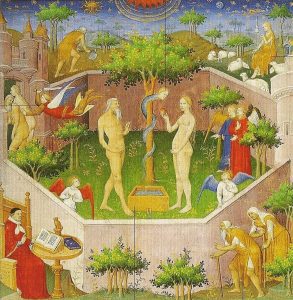
https://blogs.getty.edu/iris/a-field-guide-to-renaissance-gardens/
In passus B.XVI, the narrator of Piers Plowman is shown an allegorical tree to teach him what ‘charite is to mene’, yet despite the ‘Tree of Charity’ label which follows this passage in critical literature, in the B-text Langland never actually calls the tree itself ‘charity’ but rather ‘patience’. Conor McKee’s article looks at the interrelation of the virtues of caritas and patientia in medieval sacramental theology in order to make sense of this discrepancy between the critical and authorial names for the tree. It draws attention to the use of patientia to describe cooperation with grace in penitential manuals and moreover, patientia is considered essential to retaining caritas after receiving absolution. The article also proposes that Langland prepares us for the tree allegory by highlighting patientia as a preparatory virtue through the personification Patience, who takes on a sacramental role earlier in the poem from B.XIII to B.XIV.
Link for further information: https://doi.org/10.1484/J.YLS.5.131971
Conor McKee is a PhD candidate at the Faculty of English and Pembroke College.
